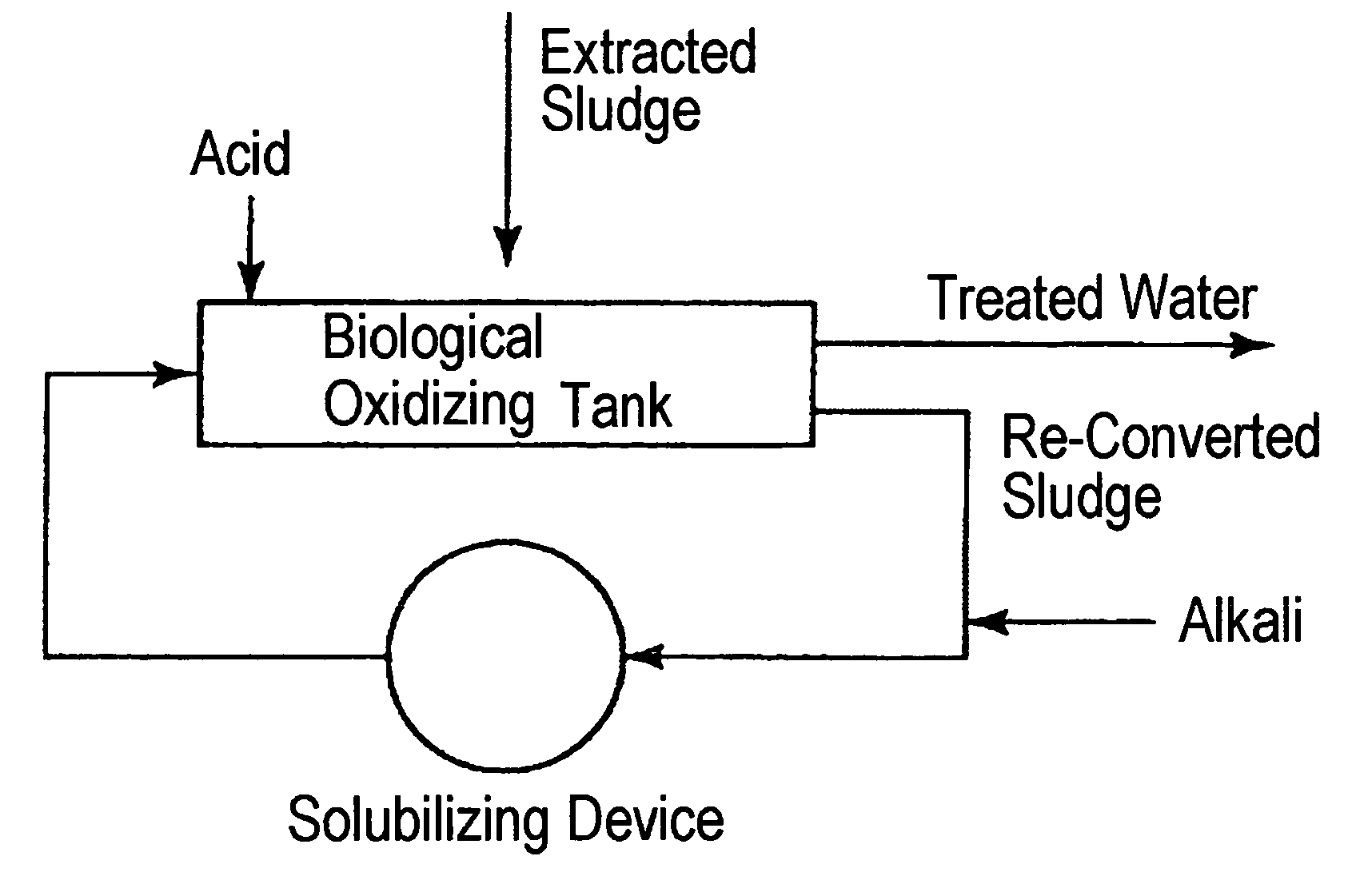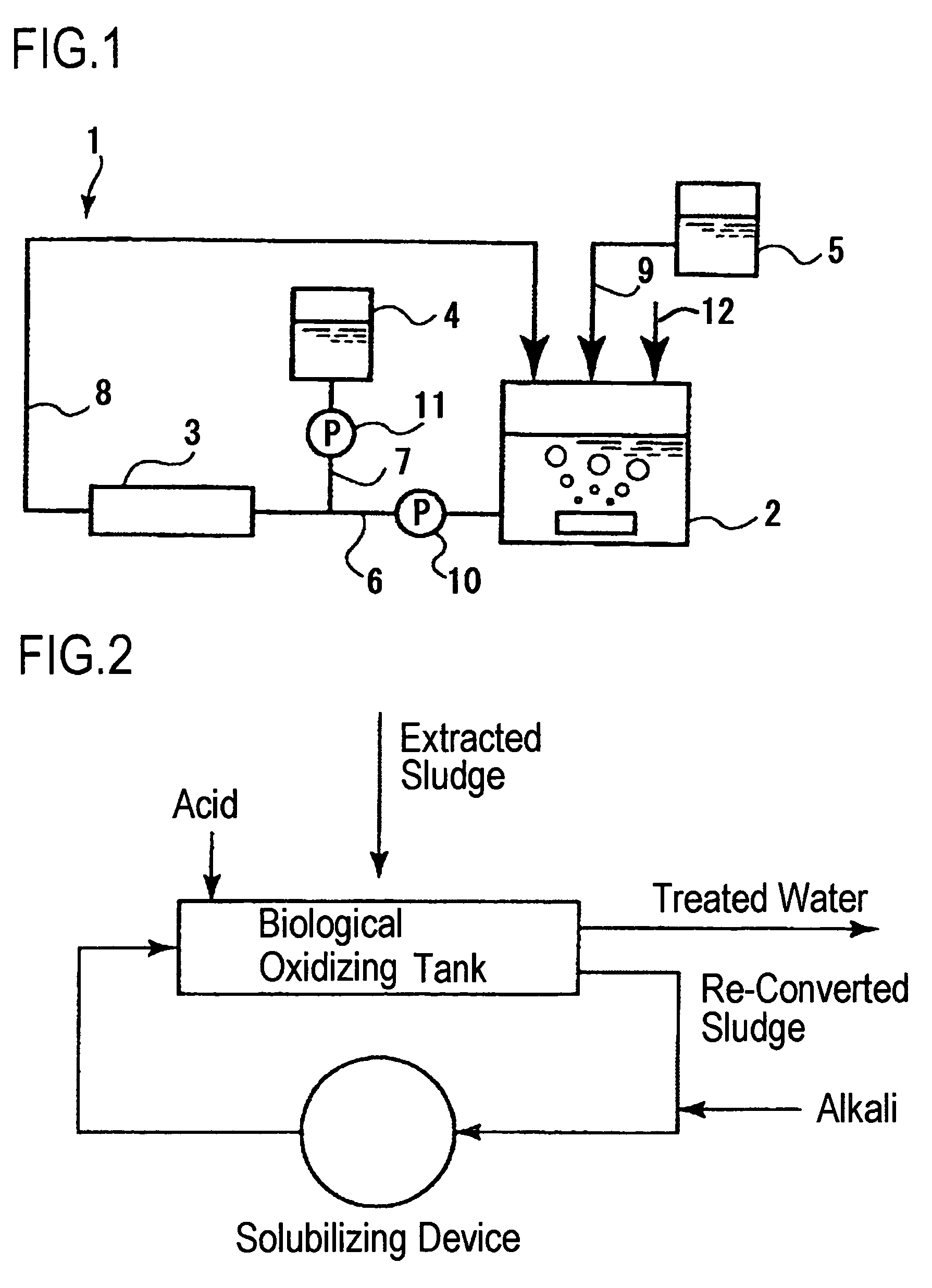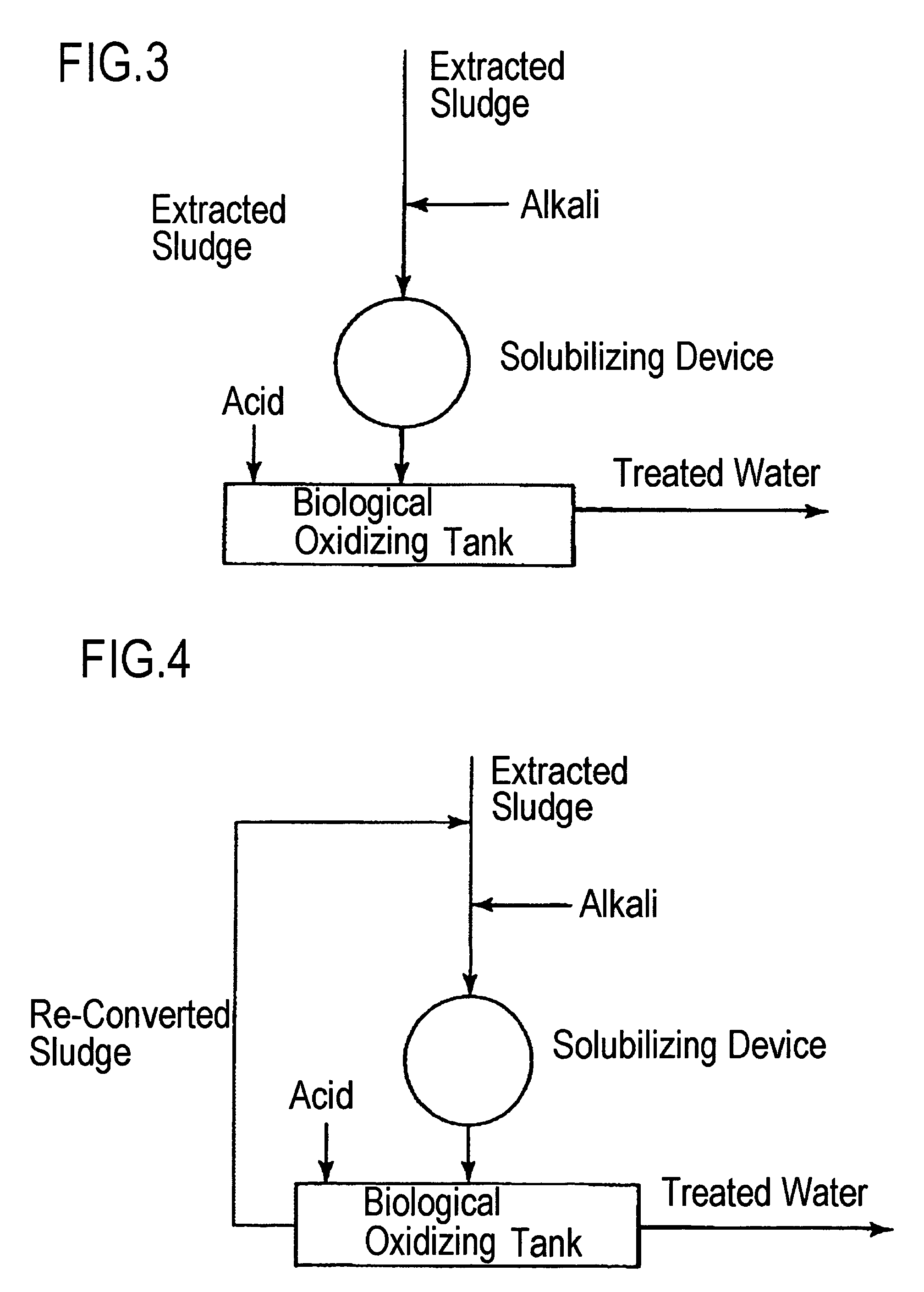Method of reducing volume of sludge
a technology of sludge and volume reduction, which is applied in the field of sludge volume reduction, can solve the problems of high cost, prolonged digestion time, low digestion rate, etc., and achieve the effects of reducing molecular weight, reducing molecular weight, and sufficient solubility
- Summary
- Abstract
- Description
- Claims
- Application Information
AI Technical Summary
Benefits of technology
Problems solved by technology
Method used
Image
Examples
example 1
[0116]The following Example demonstrates the effect of the temperature, pressure and pH on the rate of sludge solubilization. FIG. 12 shows the relation between the treatment temperature and time needed in 85% solubilization of sludge with organic sludge concentration of 10,000 mg / L in case the sludge is solubilized by heat and pulverizing treatment (pattern 1), by heat and alkali treatment (pattern 2) and by heat, alkali, and pressure treatment (pattern 3). The solubilizing treatment of the pattern 1 is a method comprising heating the sludge, without pH adjustment, that is, at pH 7, by a solubilizing device, and pulverizing the sludge by expansion on depressurization produced in ejecting the heated sludge to outside the solubilizing device under the saturated steam pressure at the heating temperature. The solubilizing treatment of the pattern 2 is a method comprising adjusting the pH of the sludge by alkali, solubilizing the sludge by heating it under saturated steam pressure by a ...
example 2
[0118]The following Example shows the relation between the rate of solubilization and the treatment time for solubilizing the sludge. FIG. 13 shows the relation between the rate of solubilization and the treatment time for the sludge with organic sludge content of 10,000 mg / L, in case the sludge treatment is carried out by heat and pulverizing treatment (pattern 1), heat and alkali treatment (pattern 2) and heat, alkali and pressure treatment (pattern 3). The inorganic content in the sludge is disregarded. The heating temperature was set to 250° C., and the pH value of sludge was set to 14 for the alkali treatment for the patterns 2 and 3. The saturated steam pressure was used for the treatment with the patterns 1 and 2, while the pressurizing treatment with the pattern 3 was carried out under a pressure of 5 MPa higher than the saturated steam pressure of 4.3 MPa for 250° C.
[0119]As may be seen from FIG. 13, 85% solubilization could be achieved by the treatment of ca. 40 minutes, f...
example 3
[0120]In the following Example, biodegradability of solubilized sludge was scrutinized from changes in the amount of oxygen consumption of activated sludge in case the solubilized sludge has been added to the activated sludge as a BOD source. In Run 1, sludge solubilized by heat and alkali treatment was solid-liquid separated and only the liquid part free of solid content was used as a BOD source. In Run 2, the liquid part of sludge, solubilized by ca. 100% by the heat, alkali and pressure treatment, was added as a BOD source. In both Run 1 and Run 2, the BOD source was added in an amount such that the dry weight of sludge prior to solubilization accounts for 0.1 times the dry weight of activated sludge. Specifically the heating temperature was set to 200° C., the pH by alkali addition was set to 14, and the heating time was set to 15 minutes. In the Run 1, treatment was carried out under a saturated steam pressure of 1.65 MPa and, in the Run 2, solubilized sludge, treated at 2 MPa,...
PUM
| Property | Measurement | Unit |
|---|---|---|
| pH | aaaaa | aaaaa |
| temperature | aaaaa | aaaaa |
| temperature | aaaaa | aaaaa |
Abstract
Description
Claims
Application Information
 Login to View More
Login to View More - R&D
- Intellectual Property
- Life Sciences
- Materials
- Tech Scout
- Unparalleled Data Quality
- Higher Quality Content
- 60% Fewer Hallucinations
Browse by: Latest US Patents, China's latest patents, Technical Efficacy Thesaurus, Application Domain, Technology Topic, Popular Technical Reports.
© 2025 PatSnap. All rights reserved.Legal|Privacy policy|Modern Slavery Act Transparency Statement|Sitemap|About US| Contact US: help@patsnap.com



